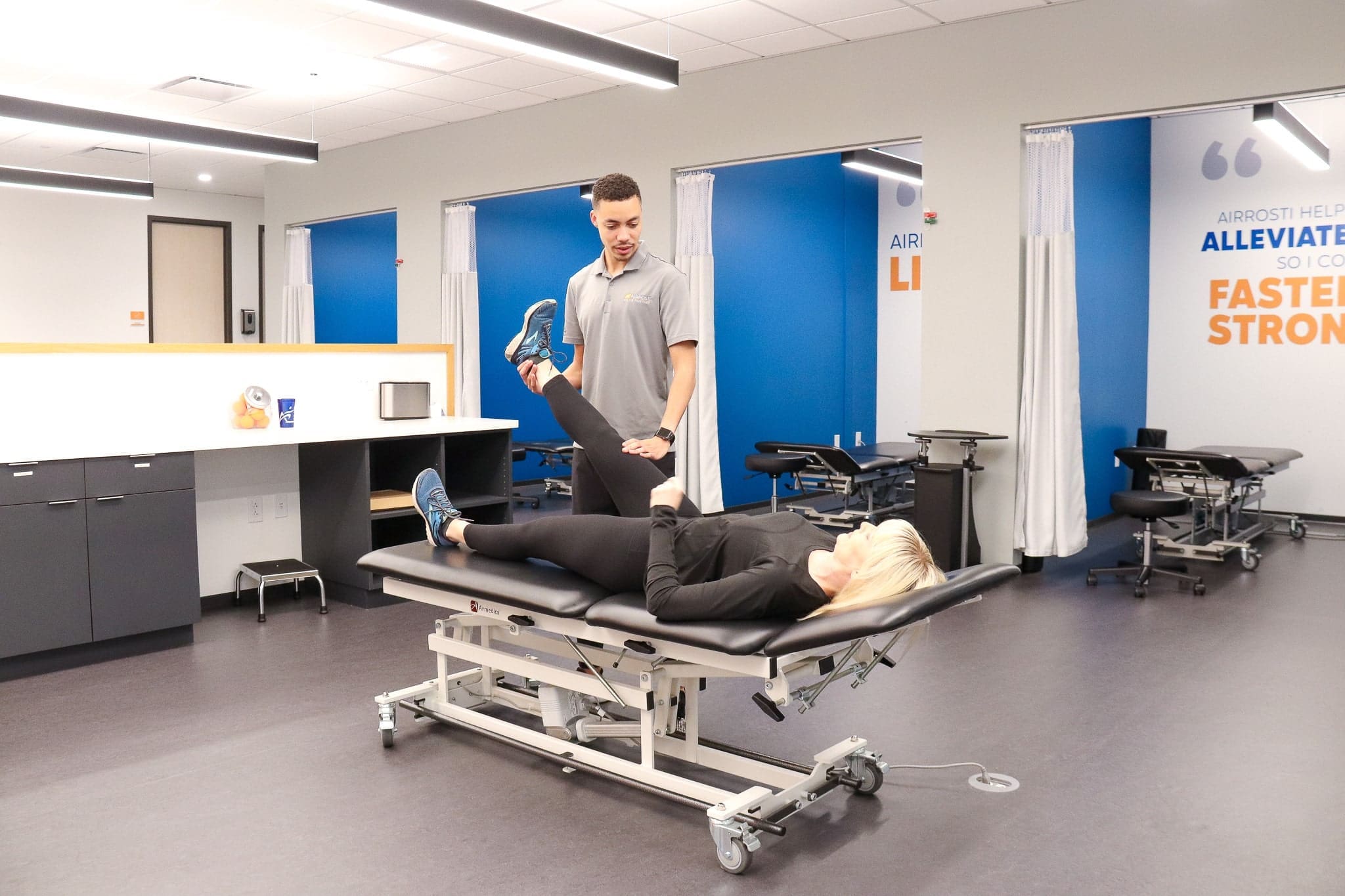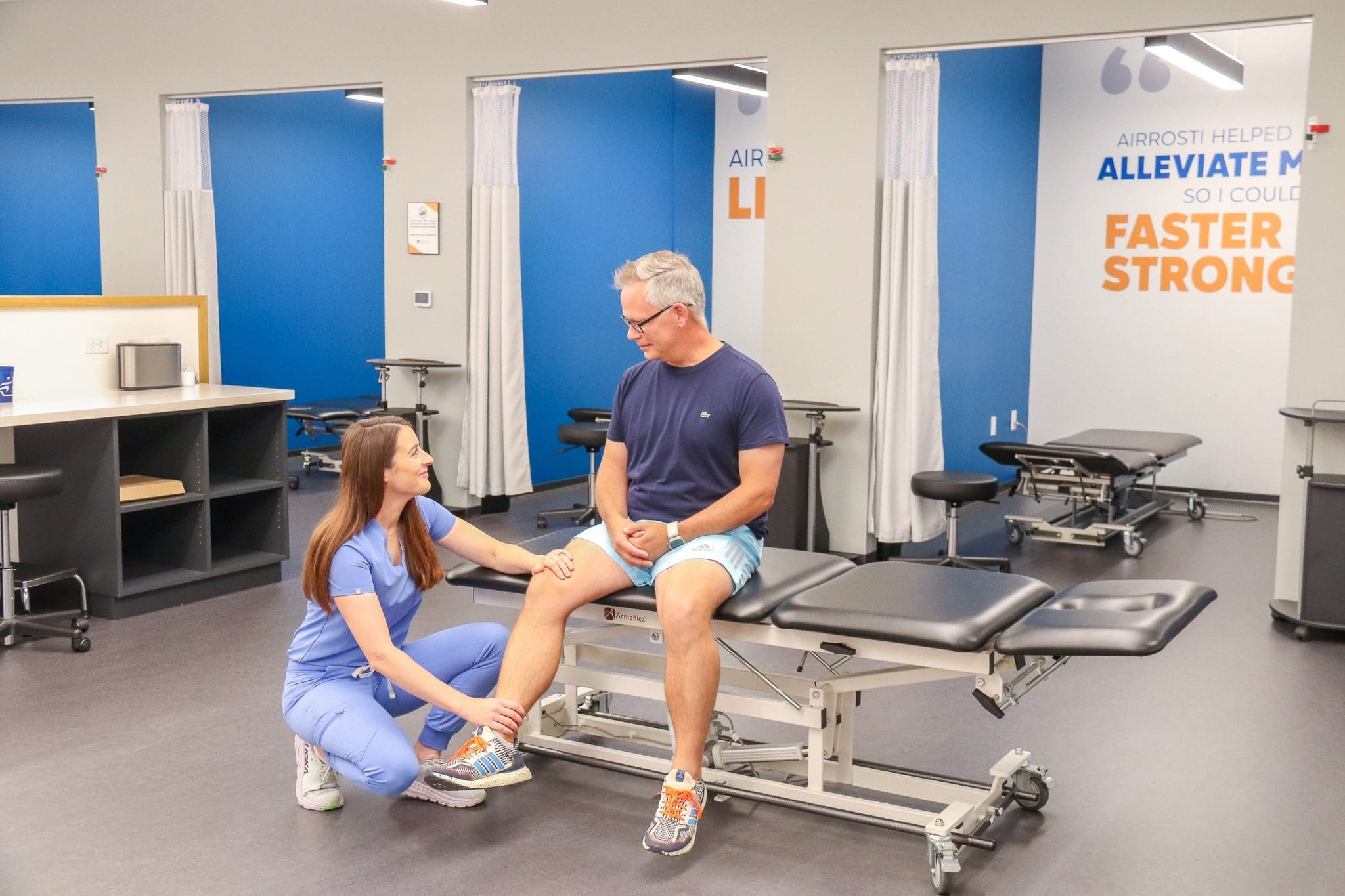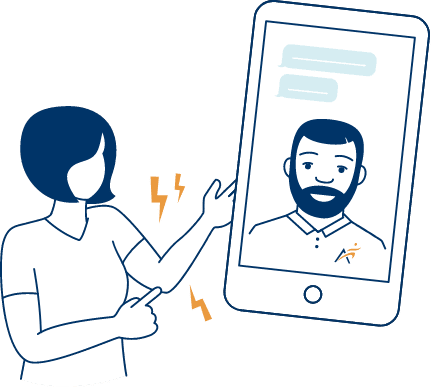- About
Who We Are
Partner With Airrosti
Testimonials
- Locations
Nationwide Care
Our virtual care option, Airrosti Remote Recovery is available nationwide.
Find A Location Nearest You
- Injuries We Treat
- No Cost Assessments
- Virtual Care
- Careers
Our virtual care option, Airrosti Remote Recovery is available nationwide.
(21,000+ reviews on Google across 150+ locations)

Have questions or would like to schedule over the phone? Call us at 844-719-5079
Find an Airrosti Clinic Near You (OH, TX, VA, WA)
We take the time needed for a thorough examination to find the underlying cause of your pain.
Airrosti Providers use hands-on manual therapy to treat your specific knee injury to reduce pain, increase mobility, and accelerate healing.
No surgery, injections, or prescription medication.
Patients have shorter recovery time with an average of 3.2 visits over 2 weeks.
Speed your recovery and keep your pain from returning.


The knee joint is the largest joint in the body. It is responsible for much of the lower body’s movement, and is comprised of various tissues, ligaments, and tendons. Because of this, the knee is highly susceptible to many injuries from repetitive stress. In addition, multiple muscles are connected to our knees, and can cause pain to radiate from another area.
Some people are more likely to develop knee problems than others. Many jobs, sports, and recreational activities can increase your chances of having problems with your knees. Your risk is also greater as you get older.
A few common knee injuries include:
These foam roller exercises, combined with the bridge and calf stretch, can help alleviate nagging knee pain. By treating the problem at the source, Airrosti can address pain quickly, often in an average of three visits (based on patient-reported outcomes). Click here to learn more about what to expect at your first visit to Airrosti.
Still have questions or concerns about your knee pain? Schedule a no-cost video chat with one of our Providers.
Many knee pain causes are the result of a direct injury. Sudden (acute) injuries may be caused by a direct blow to the knee or from abnormal twisting, bending the knee, or falling on the knee.
Overuse injuries occur with repetitive activities or repeated or prolonged pressure on the knee. Activities such as stair climbing, cycling, jogging, or jumping stress joints and other tissues can lead to irritation and inflammation.
Knee pain can often happen because of tightness in another part of the body such as in the adductor muscles, hip flexors, quadriceps, and hamstrings. Tight muscles and joints can change how the knee responds to impact from walking or running.
Other common causes of knee pain include a Baker Cyst (a buildup of synovial fluid, or joint fluid that helps with lubrication, behind the knee), rheumatoid arthritis, knee dislocation, a torn meniscus (a rupture in one or more of the cartilages in the knee), or a torn ligament.
Although the causes may be different, most often they share the same symptoms, including:
• Pain, swelling, or bruising may be severe and develop within minutes of the injury.
• The severity of the pain can vary, from a minor ache to a severe disabling pain.
• Knee pain can be localized, such as in the front of your knee, or diffuse throughout the knee, depending on which structure is involved.
• You may experience trouble walking, limping due to discomfort, or locking of the knee joint.
• The pain can vary depending on what bones of the knee are involved, such as the knee joint (femur, tibia, fibula), the kneecap (patella), or the ligaments and cartilage (meniscus) of the knee.
• Other problems can develop due to overcompensating for knee pain and favoring one leg over the other.
Surgery is not always necessary for knee pain. Many cases of knee pain can be effectively managed with conservative treatments such as physical therapy, Airrosti care, medication, and lifestyle modifications. However, surgery may be recommended for certain conditions such as severe ligament tears or advanced osteoarthritis that do not respond to conservative treatments.
It’s generally safe to take medications for knee pain, but it’s important to use them as directed by your healthcare provider. Over-the-counter pain relievers such as ibuprofen or acetaminophen can help reduce inflammation and alleviate discomfort. However, if you have any underlying health conditions or are taking other medications, it’s important to consult with your doctor before starting any new medication regimen. Additionally, prescription medications such as corticosteroid injections or viscosupplementation may be recommended for more severe cases of knee pain under the supervision of a healthcare professional.
Yes, there are several self-care techniques and exercises that can help relieve knee pain. These may include gentle stretching exercises to improve flexibility, strengthening exercises to stabilize the knee joint, and low-impact activities such as swimming or cycling to maintain mobility and reduce stress on the knee. Additionally, applying ice or heat to the affected area, foam rolling or other versions of self-myofascial release, and maintaining a healthy weight can also help alleviate knee pain.
While it’s important to avoid activities that exacerbate knee pain, completely restricting all activity may not be necessary. In many cases, modifying activities to reduce strain on the knee joint and incorporating rest breaks can help alleviate symptoms. Low-impact exercises such as swimming or walking, as well as activities that strengthen the muscles around the knee, can be beneficial for managing knee pain. However, if knee pain persists or worsens with activity, it’s important to consult with a healthcare professional for proper evaluation and guidance on activity modification.
I tore my knee to shreds in athletics many years ago. No more surgeries for me. The last MRI showed every tendon and ligament torn in the right knee. The knee cap can dislocate. When it does, it locks in on the side of the knee, and the knee can swell with fluid. Last time was the worst time. I've never been a doctor who didn't say, "That's the worst knee I ever saw," including Dr. Matthys. So, he went to work on it at my first session. The pain of him working on my knee was intense. I might add that I've lived with this for nearly 50 years. When I went to see him, I hadn't slept through a night in over seven days due to the pain level. So his touching and moving and digging was excruciating. I nearly passed out from him working on it. B...+ show moreut he persisted. That night was the first night I slept without pain. I still had lots of pain, but it had dropped from 10 all the time to 5 all the time. Yesterday was the second session, and it was not quite as intense. He did things to the tendons and ligaments up and down from the knee that would make great torture for spies. Seriously. I had no idea why he was working way up to the hip and on the back to the buttocks, and then down from the knee to the ankle. I was exhausted when I walked out. EXHAUSTED. Today, I woke up. I could walk up and down the stairs. My knee mobility is mostly back. The pain level is down to a 1-2. There is no way to thank him and Airrosti enough. This man has the greatest heart and spirit of almost anyone I've ever met. He might be from Iowa, but I'm claiming him as an honorary Texan. I have a couple more sessions, and I think it's best if I do this monthly from here on. THANK YOU, Dr. Timothy Matthys! You are a God send.
by Timothy Dillard
We offer both in-clinic and telehealth appointments to best suit your needs.
Reviewed by Casey Crisp, Doctor of Chiropractic
Disclaimer: Always consult with your doctor before starting any exercise program. If you experience any numbness, tingling or reproduction of your symptoms, please contact your doctor.
